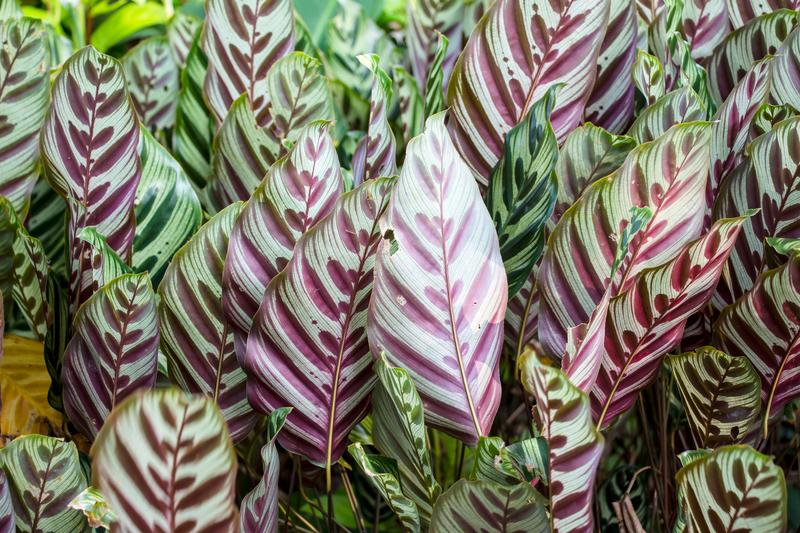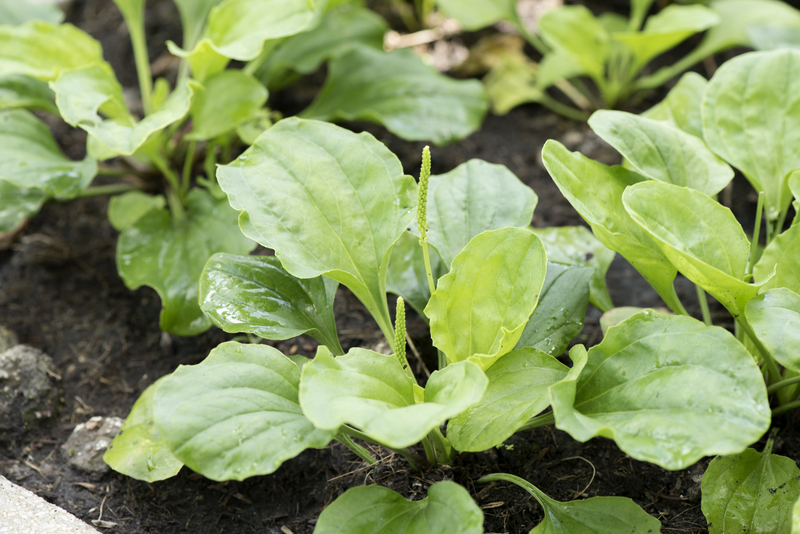Key Techniques for Winter-Proofing Your Garden Plants
Posted on 10/06/2025
Key Techniques for Winter-Proofing Your Garden Plants
As the harsh cold of winter sets in, your beautiful garden can be at risk of frostbite, freezing winds, and waterlogged soil. Whether you're an enthusiastic gardener or a beginner, knowing key techniques for winter-proofing your garden plants is crucial for ensuring their survival and vigorous growth come springtime.

Why Is Winter Protection for Plants Important?
Many plants enter dormant states during winter, relying on energy stored during warmer months. However, sub-zero temperatures, snow, ice, and fluctuating conditions can cause serious damage -- from uprooting to winter burn and even death. Learning effective winter-proofing strategies protects your investment, your landscaping, and ensures a thriving garden all year round.
Let's dive into the essential winterizing strategies, supported by expert advice and best practices for protecting garden plants in winter.
1. Assess Your Garden's Vulnerabilities
Start your winter-preparation journey with a thorough garden inspection. Take note of:
- Plant types (annuals, perennials, shrubs, trees)
- Pots vs. in-ground plantings
- Microclimates (shady zones, exposed, or wind-protected areas)
- Drainage issues
- Past winter damage or vulnerable spots
Understanding which parts of your garden are most vulnerable helps determine winter protection strategies for garden plants that will work best for your situation.
2. Choose the Right Plants and Know Their Hardiness Zones
If you're planning or replanting your garden, always check the USDA Plant Hardiness Zone Map (or your country's equivalent). Selecting cold-tolerant, native, or adapted varieties ensures better survival. If you have exotic or borderline-hardy plants, they'll need special winter protection for plants outside their zone.
- Deciduous varieties (those that lose leaves) often withstand winter better than semi-evergreens or evergreens, which are prone to winter desiccation (drying out).
- Container plants are most vulnerable, as their roots lack insulation from the earth.
3. Mulching: The 'Winter Blanket' for Your Garden
Purpose of Mulching
Mulch acts as nature's thermal blanket. It provides temperature regulation, moisture retention, and root insulation. Mulching is one of the highest-impact winter-proofing techniques for garden plants.
- Apply 2-4 inches of organic mulch (shredded bark, pine needles, straw, or shredded leaves) around the base of plants.
- Avoid piling mulch against stems or trunks, which can lead to rot.
- Replenish mulch as it breaks down, especially after heavy rain or wind.
Tip: Mulching is best done after the ground freezes, to keep soil cold and avoid premature thawing and freezing cycles, which can harm roots.
4. Watering Wisely Before and During Winter
Proper hydration is crucial before the ground freezes.
- Water deeply in late autumn for all your trees, shrubs, and perennials, especially evergreens, which lose water through foliage even in winter.
- Reduce watering as temperatures drop, but do not stop completely for evergreens if the ground is unfrozen and dry spells occur.
- Avoid saturated soil: Overwatering can cause root rot as cold, slow-draining soils keep roots wet longer.
Dry, windswept areas and new plantings demand extra attention--winter drought stress is a silent killer!
5. Shielding Plants from Winter Winds and Frost
Creating Physical Barriers
Bitter winds and frost can strip moisture and damage sensitive plants. Use these winter-proofing strategies:
- Windbreaks: Erect burlap or garden fleece barriers, staked a few feet away from wind-sensitive plants (like camellias, rhododendrons, azaleas).
- Frost cloths/sheets: Drape frost fabric or old sheets over delicate plants during extreme cold spells. Secure them at ground level to trap warm air.
- For individual shrubs or roses: Create cages of chicken wire and fill with leaves or straw, or wrap with burlap for maximum cold protection.
Don't use plastic sheeting unless it's ventilated and only during short cold snaps--plastic traps moisture and may promote rot during daylight warm-ups.
6. Caring for Container Plants in Winter
Why Are Pots and Planters More Vulnerable?
Container plants aren't insulated at the root level. When temperatures plunge, pots can freeze solid and roots may perish.
- Move containers to sheltered areas (garage, unheated shed, covered porch) before the first hard frost.
- Group pots together in a protected spot, wrap with bubble wrap or fabric, and mound straw over the surface for further insulation.
- Elevate pots on bricks or pot feet to let water drain freely--wet roots freeze faster than dry roots.
- Water sparingly, just enough to avoid total dryness; don't overwater!
If possible, use frost-proof containers such as resin, wood, or fiberglass--ceramic and terra cotta may crack in freezing weather.
7. Pruning and Cleaning Up Before Winter
What to Prune and When?
Proper pruning prevents disease and damage but timing and technique are everything:
- Remove dead, diseased, or broken branches from trees and shrubs in late fall.
- Skip heavy pruning in autumn for spring-flowering trees and shrubs--they form buds for next year's blooms in late summer/fall.
- Some perennials benefit from cutting back (e.g., hosta, peonies), while ornamental grasses and seed heads on echinacea, rudbeckia can be left for winter interest and wildlife.
Rake up and compost fallen leaves (except diseased leaves), clean away debris to reduce hiding spots for pests and pathogens. This minimizes overwintering insects and fungal spores in your garden.
8. Winterizing Specialty Plants: Roses, Bulbs, and Tender Species
Roses:
- After several hard frosts, mound soil 8-12 inches high over the crown, then cover with mulch or leaves for hybrid teas and floribundas. Don't prune heavily until spring.
Bulbs:
- Spring bulbs (daffodils, tulips) overwinter best in well-drained soils with a mulch topping; summer bulbs (dahlias, gladiolus) often need to be lifted and stored in a cool, dry place.
Tender Perennials (e.g., cannas, geraniums):
- Move indoors before frost or treat as annuals.
- Alternatively, dig up, dry, and store their roots as you would with tender bulbs.
9. Protecting Young Trees and Shrubs
- Wrap young trunks with tree wrap or plastic spiral guards to deter rodents and prevent sunscald (bark splitting from freezing/thawing cycles).
- Stake saplings in wind-prone locations to prevent shifting and root disturbance during storms.
For winter protection of recently planted trees and evergreens, deep watering before ground freeze and a thick mulch ring will go a long way.
10. Snow and Ice Management
- Brush off heavy, wet snow from shrubs with an upward motion to avoid breaking branches.
- Don't attempt to remove ice--let it melt naturally; hacking may cause more harm than good.
- Avoid using salt-based de-icers near plant beds; salt can damage roots and soil structure. If de-icing pathways, use sand or non-toxic, plant-safe products.
11. Planning and Planting for Future Winters
Every winter teaches new lessons about the strengths and weaknesses of your garden. Consider these proactive tips:
- Invest in windbreaks: Hedges or fences can shield entire sections of your garden.
- Build raised beds for vegetables in cold, poorly drained soils--these warm up quicker in spring too!
- Select increasingly hardy varieties each year, moving tender plants to containers for easy winter relocation.

Frequently Asked Questions: Winter-Proofing Garden Plants
- Should I fertilize my plants before winter?
It's best to avoid high-nitrogen fertilizers in late fall. They encourage tender new growth that's susceptible to frost. Instead, add compost or slow-release organic soil amendments. - Can I use landscape fabric as winter protection?
Fabric is better for weed control than winter insulation. For cold protection, use mulch, burlap, or special frost cloths. - What temperature kills most plants?
This varies by species. Most annuals perish below freezing, while perennials and trees have varying tolerance. Always check species-specific cold hardiness.
Conclusion: Cultivate a Resilient, Winter-Proof Garden
With these key winter-proofing techniques for garden plants, you can ensure your landscape slumbers safely through the cold and bursts back stronger than ever in spring. Start by assessing your garden's vulnerabilities, apply strategic mulching, manage watering and shelter from wind and frost, protect containers, practice thoughtful pruning, and prepare especially tender species with extra care.
Remember: Good winter plant protection isn't just about surviving--it's about setting the stage for lush, healthy growth every year. Plan ahead, act early, and your garden will reward you come springtime!
Related Tips and Further Reading
- How to Create Wildlife Havens in Your Winter Garden
- Best Cold-Tolerant Plants for Your Climate
- Composting in Cold Weather: Tips for Year-Round Soil Health
Start your garden's winter-proofing journey today--because every season counts in building a flourishing, resilient landscape!

